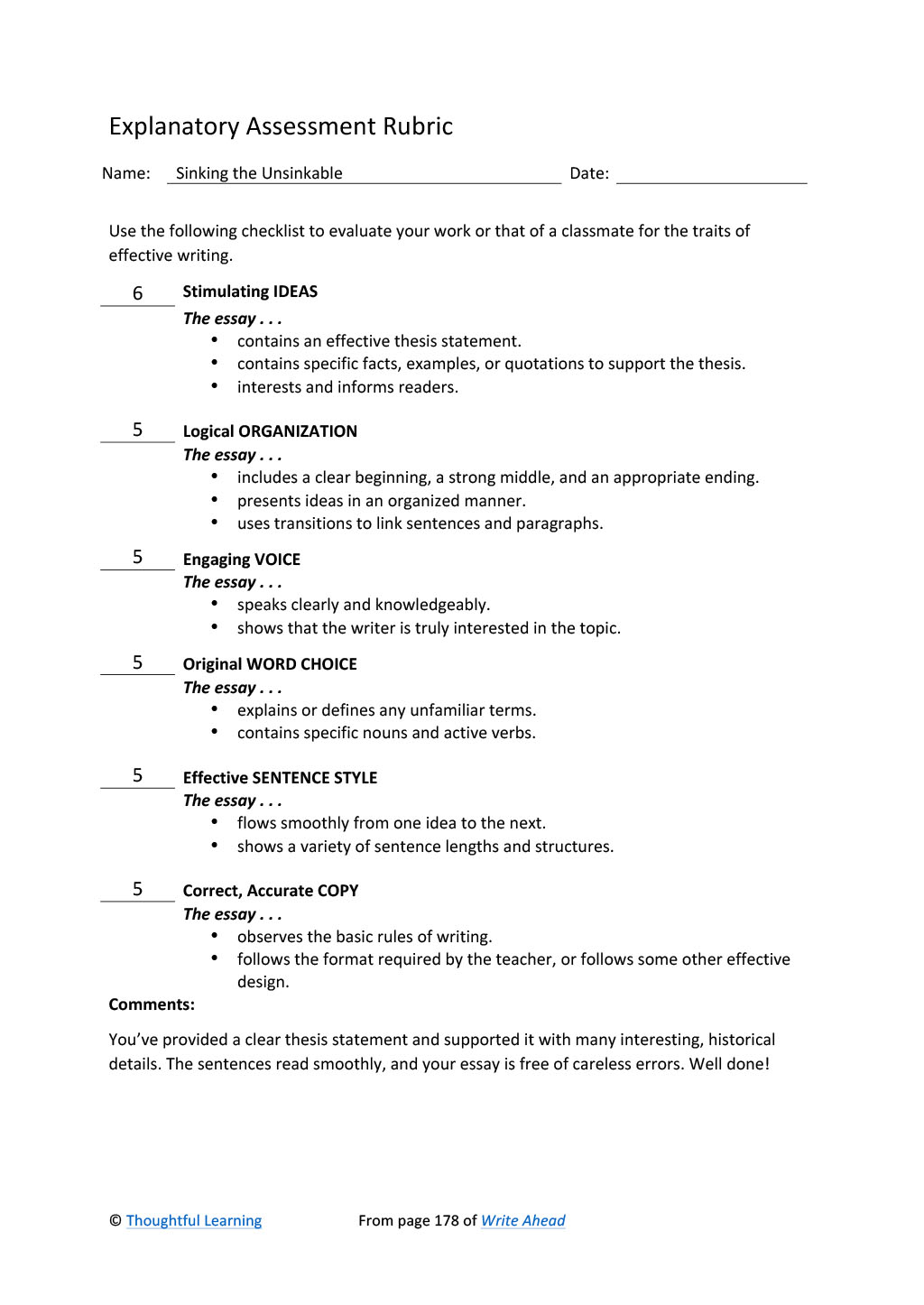Student Model
Sinking the Unsinkable
About 450 miles off the coast of Newfoundland in 12,5000 feet of water, scientists discovered the remains of the great ocean liner the S.S. Titanic. The 73-year search for the Titanic, which went down in what is considered the world's greatest sea disater, was a challenging one. It concluded finally in September 1985. Because of this discovery, interest in this legendary ship became stronger than ever.
In part, this interest may be due to the Titanic's reputation. When it was first launched in 1912, the British steamer was the largest ship in the world. An incredible 882 feet long and 175 feet high, the Titanic was comparable to four city blocks in length and 11 stories in height. It was proclaimed the most expensive, most luxurious ship ever built. It was said to be "unsinkable."
This claim resulted from special features. The Titanic was equipped with a double bottom, and the hull was divided into 16 separate watertight compartments. These added features, it was felt, would make the Titanic unsinkable.
Despite its reputation, the mighty Titanic did sink, and on its maiden voyage, too. Carrying approximately 2,200 passengers and over $420,000 worth of cargo, the Titanic set sail from England in April of 1912, bound for New York. Just a few days out of port, however, on the night of April 14, the Titanic collided with an iceberg in the North Atlantic, damaging several hull plates along its starboard side. Six of the 16 watertight compartments were compromised, and water that filled these compartments could flow over the top of them into the next compartments. The ship was doomed.
The mighty "floating palace" sunk in a matter of two and a half hours, taking with it all of its cargo and the lives of 1,522 passengers. Because of its unsinkable reputation, the ship did not have enough life boats on board for all of the passengers, and in the confusion after the collision, many life boats left the ship when only half-full. Most of those who died were men, since women and children received priority treatment. Also, most of those who died came from the third-class cabins in steerage, who had less access to the life boats than first-class passengers. The tragic end to this once-touted ship is a lesson against hubris. No plan is foolproof. No ship is unsinkable.

Rubric


Sinking the Unsinkable by Thoughtful Learning is licensed under a Creative Commons Attribution-NonCommercial-ShareAlike 4.0 International License.
Based on a work at k12.thoughtfullearning.com/assessmentmodels/sinking-unsinkable.